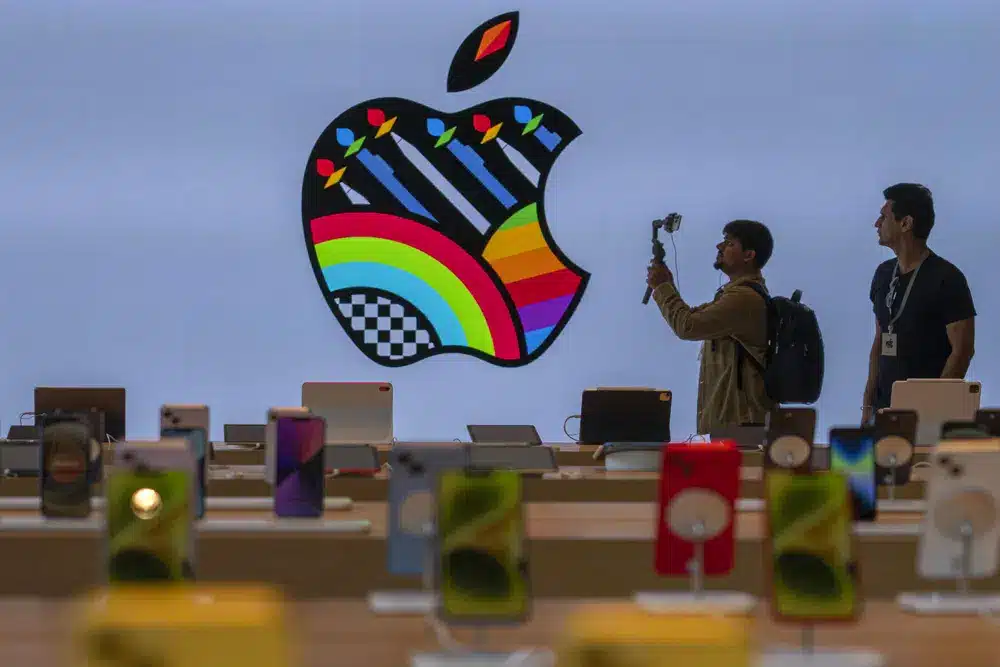NEW DELHI, India — Apple Inc. launched its first flagship shop in India on Tuesday, highlighting the company’s expanding ambitions to expand in the nation, which it also aims to transform into a potential manufacturing hub.
Tim Cook, the company’s CEO, posed for selfies with a few of the 100 Apple fans who had gathered outside the vast 20,000-square-foot store in India’s financial hub, Mumbai, whose design was inspired by the city’s famed black-and-yellow cabs. A second store will open in the national capital of New Delhi on Thursday.
“India has such a beautiful culture and incredible energy, and we’re excited to build on our long-standing history,” Cook stated.
The IT behemoth has been in India for almost 25 years, distributing its wares through authorized stores and a website launched a few years ago. However, regulatory issues and the epidemic hampered its intentions to construct a flagship store.
According to Jayanth Kolla, an analyst at Convergence Catalyst, the news outlets clearly show the company’s determination to invest in India, the world’s second-largest smartphone market, where iPhone sales have steadily increased. The outlets demonstrate “how much India matters to the company’s present and future,” he added.
India’s sheer size is especially appealing to the Cupertino, California-based corporation.
Around 600 million of India’s 1.4 billion people use cellphones, “which means the market is still under-penetrated and the growth prospect is huge,” said Neil Shah, vice president of research at technology market research firm Counterpoint Research.
According to Counterpoint data, the Silicon Valley business increased its share of the country’s smartphone market from 2% to 6% between 2020 and 2022.
Nonetheless, the iPhone’s high price puts it out of reach for most Indians.
Instead, iPhone sales in India have prospered within a sliver of upper-middle-class and rich Indians with disposable incomes, a group that Shah claims is growing. According to Counterpoint Research, Apple owns 65% of the “premium” smartphone market, with prices starting at 30,000 rupees ($360).
Apple said in September that it would begin manufacturing the iPhone 14 in India. The announcement was welcomed as a victory for Prime Minister Narendra Modi’s government, which has advocated for increased domestic manufacturing since his election in 2014.
Apple began manufacturing in India with the iPhone SE in 2017 and has since produced various iPhone models nationwide.
Contractors with facilities in China produce the majority of Apple’s smartphones and tablets, but the company began considering transferring some manufacturing to Southeast Asia or other locations after repeated shutdowns to combat COVID-19 affected its worldwide product flow.
“Big companies got a jolt, and they realized they needed a backup strategy outside of China — they couldn’t risk another lockdown or any geopolitical rift affecting their business,” Kolla explained.
The difficulty for Apple is that raw materials are still coming from outside India.
According to Counterpoint Research, India now produces nearly 13 million iPhones per year, up from fewer than 5 million three years ago. This equates to around 6% of all iPhones produced globally – a pittance compared to China, which still produces around 90%.
Last week, India’s Commerce Minister Piyush Goyal stated that the government was in constant contact with Apple to boost their business in India and that the corporation intended to have 25% of its global output come from India within the next five years.
According to Shah of Counterpoint, the difficulty for Apple is that raw materials are still coming from outside India, so the tech company will need to either find a local source or bring their suppliers, who are based in countries like China, Japan, and Taiwan, closer to push up production.
Nonetheless, he is optimistic that this aim can be accomplished, especially given India’s lower labor costs and the government’s enticing subsidies to stimulate local production.
“Everything is about timing for Apple.” They will only enter a market with full force once they are sure of their chances. “They see the opportunity here today — it’s a win-win situation,” Shah explained.
SOURCE – (AP)












